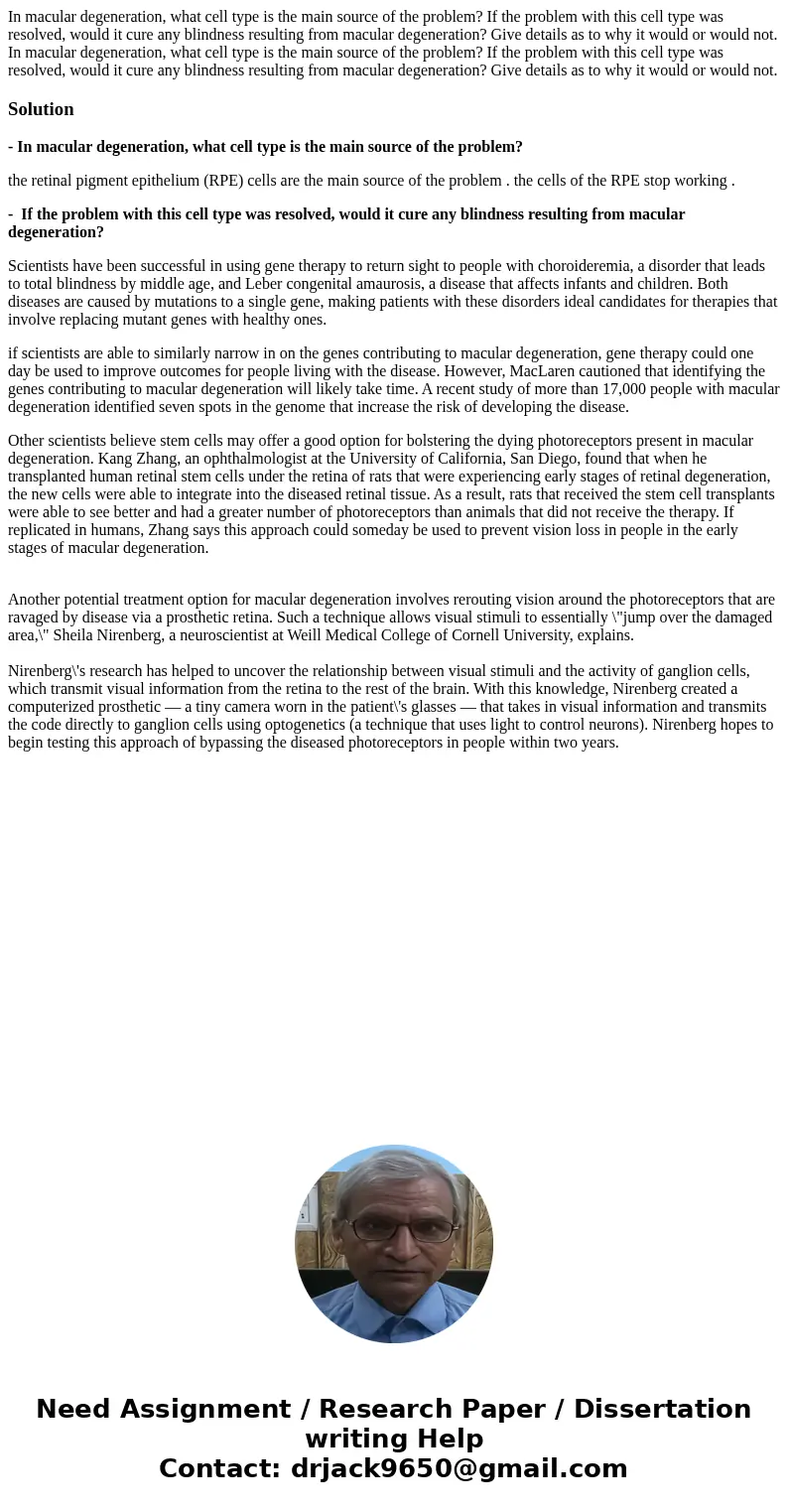In macular degeneration what cell type is the main source of
Solution
- In macular degeneration, what cell type is the main source of the problem?
the retinal pigment epithelium (RPE) cells are the main source of the problem . the cells of the RPE stop working .
- If the problem with this cell type was resolved, would it cure any blindness resulting from macular degeneration?
Scientists have been successful in using gene therapy to return sight to people with choroideremia, a disorder that leads to total blindness by middle age, and Leber congenital amaurosis, a disease that affects infants and children. Both diseases are caused by mutations to a single gene, making patients with these disorders ideal candidates for therapies that involve replacing mutant genes with healthy ones.
if scientists are able to similarly narrow in on the genes contributing to macular degeneration, gene therapy could one day be used to improve outcomes for people living with the disease. However, MacLaren cautioned that identifying the genes contributing to macular degeneration will likely take time. A recent study of more than 17,000 people with macular degeneration identified seven spots in the genome that increase the risk of developing the disease.
Other scientists believe stem cells may offer a good option for bolstering the dying photoreceptors present in macular degeneration. Kang Zhang, an ophthalmologist at the University of California, San Diego, found that when he transplanted human retinal stem cells under the retina of rats that were experiencing early stages of retinal degeneration, the new cells were able to integrate into the diseased retinal tissue. As a result, rats that received the stem cell transplants were able to see better and had a greater number of photoreceptors than animals that did not receive the therapy. If replicated in humans, Zhang says this approach could someday be used to prevent vision loss in people in the early stages of macular degeneration.
Another potential treatment option for macular degeneration involves rerouting vision around the photoreceptors that are ravaged by disease via a prosthetic retina. Such a technique allows visual stimuli to essentially \"jump over the damaged area,\" Sheila Nirenberg, a neuroscientist at Weill Medical College of Cornell University, explains.
Nirenberg\'s research has helped to uncover the relationship between visual stimuli and the activity of ganglion cells, which transmit visual information from the retina to the rest of the brain. With this knowledge, Nirenberg created a computerized prosthetic — a tiny camera worn in the patient\'s glasses — that takes in visual information and transmits the code directly to ganglion cells using optogenetics (a technique that uses light to control neurons). Nirenberg hopes to begin testing this approach of bypassing the diseased photoreceptors in people within two years.

 Homework Sourse
Homework Sourse